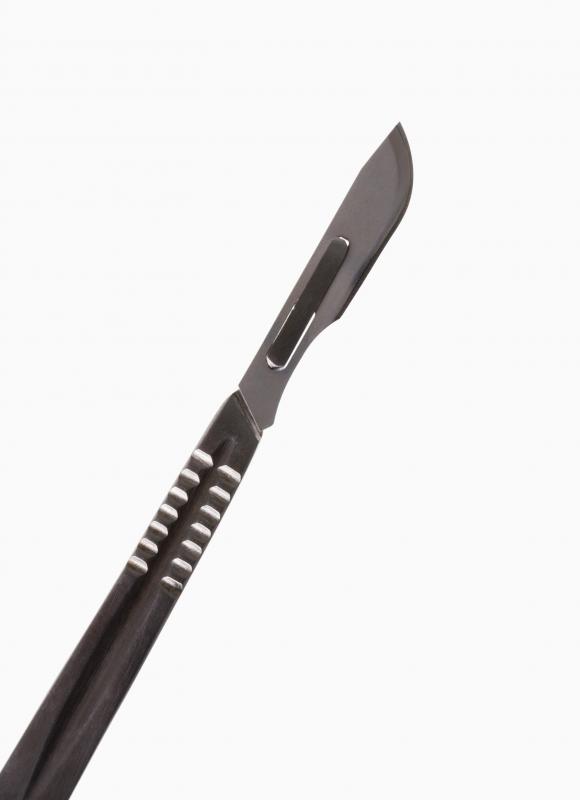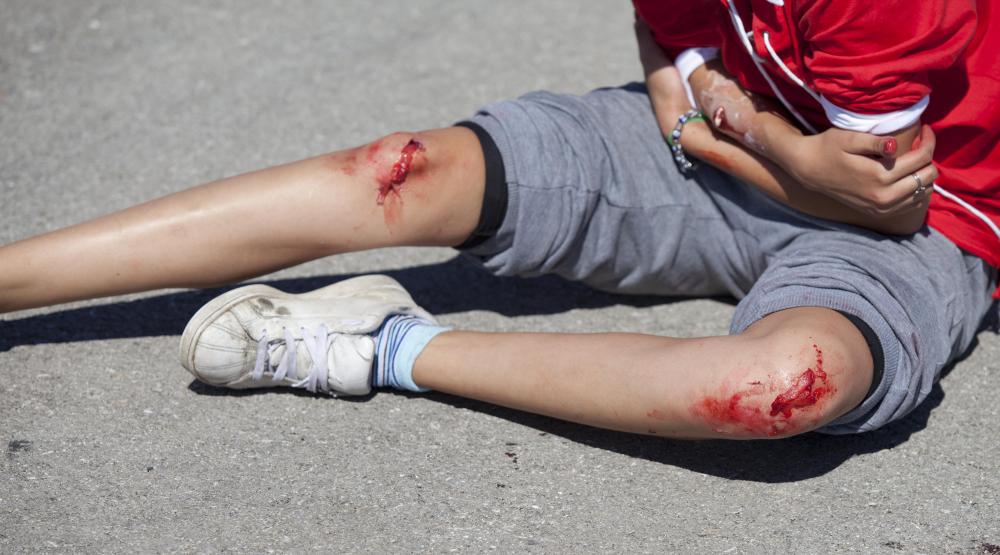At TheHealthBoard, we're committed to delivering accurate, trustworthy information. Our expert-authored content is rigorously fact-checked and sourced from credible authorities. Discover how we uphold the highest standards in providing you with reliable knowledge.
What is Debridement?
Debridement is a medical procedure in which dead, infected tissue is cut away from a wound to expose healthy living tissue. It is an important step in the treatment of many injuries, since it can be difficult to assess the severity of an injury until the dead skin has been cut away. The process is also crucial in the treatment of necrosis, along with infected wounds and ulcers, since it prevents the spread of infection and promotes healing. There are a number of ways to accomplish debridement, from using the body's own ability to digest dead tissue to cutting away dead flesh with a scalpel.
Before the procedure can take place, the patient is typically stabilized and his or her general health is assessed. The wound is flushed with a mild saline solution to remove loose foreign material in the wound and to promote a sterile environment, and a mild anesthetic may be offered as well, because the procedure can be painful. The nurse, doctor, or medical technician doing the procedure will also collect the necessary tools.

Surgical or sharp debridement is accomplished with the use of tools like scalpels. Foreign objects are removed from the wound while dead flesh is cut away so that the healthy tissue underneath is exposed. This can be accomplished at the patient's bedside, or in an operating room if the injuries are severe or close to internal organs.
In mechanical debridement, a saline-soaked pad is applied to a wound and allowed to dry overnight. The pad attaches itself to the dead flesh underneath, and when it is pulled away, it will lift the dead material too. This technique can be very painful for patients, and it is not very selective, since healthy tissue can be removed as well.

Chemical debridement utilizes enzymes which help to dissolve dead material, while autolytic debridement uses medicated pads to encourage the body to digest the dead skin. The autolytic process cannot be used on infected wounds, since it works very slowly. For some medical conditions, biological debridement using maggots is advised. Maggots will only eat dead flesh, so they can be introduced to a wound to clean out the dead material and them removed. While this sounds distasteful, it can be very useful for wound care, and maggots are employed in hospitals all over the world.

This procedure should only be attempted by trained medical personnel, because it is easy to accidentally injure a patient while performing debridement. Medical personnel can also take note of the characteristics in the wound, allowing them to offer appropriate treatments.
AS FEATURED ON:
AS FEATURED ON:















Discussion Comments
I would say that you are infected. I had the same thing and it became very painful, was given antibiotics and strong pain killers, was soon sorted. Green to me is infected!
I have just received endoscopic sinus surgery 3 weeks ago, My nose is still blocked up with crusts that have formed. I have been down to the ENT clinic and the doctors have removed them but the next day they have returned. It wouldn't bother me too much but it is causing a bad smell. Every time I breathe in it smells like dirty socks this is driving me mad and the doctors at ENT have told me just to be patient. The crusts up my nose are a deep green color but the doctor said it's just my body healing but I think it's infected. Is this normal or do I need debridement surgery? I really hope you can help it's making me so depressed.
Post your comments